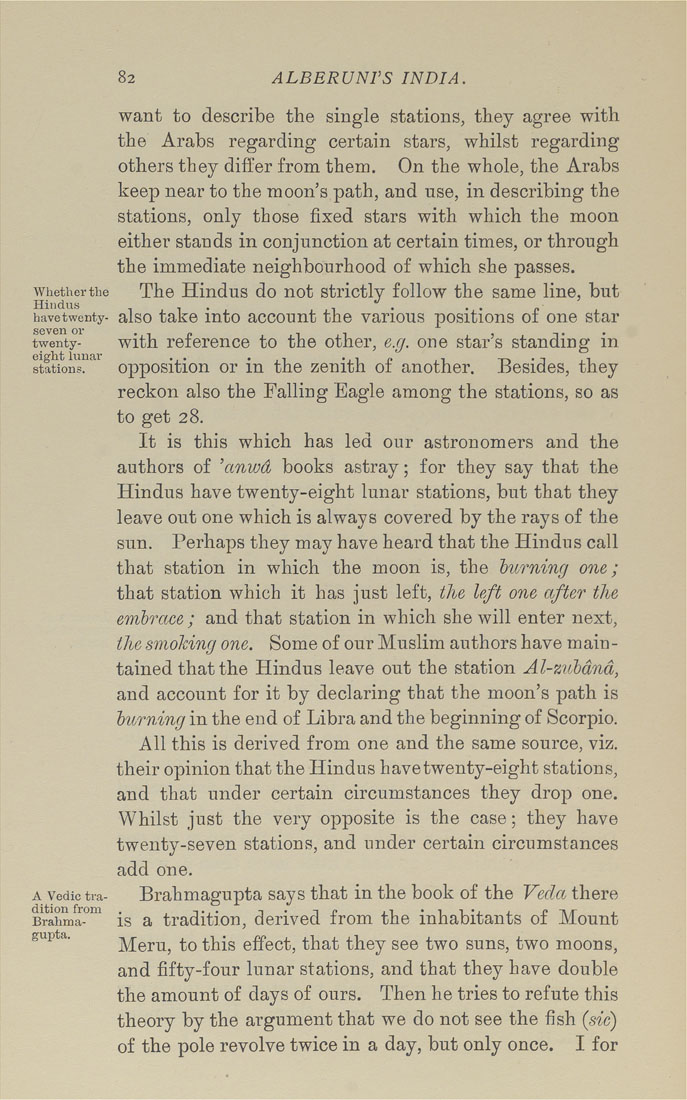82 ALBERUNTS INDIA.
want to describe the single stations, they agree with
the Arabs regarding certain stars, whilst regarding
others they differ from them. On the whole, the Arabs
keep near to the moon's path, and use, in describing the
stations, only those fixed stars with which the moon
either stands in conjunction at certain times, or through
the immediate neighbourhood of which she passes.
Whether the The Hindus do not strictly follow the same line, but
Hindu.s i i • i • • • t>
havetwenty- also take into accouut the various positions of one star
twenty- with reference to the other, e.g. one star's standing in
stations. oppositiou OT in the zenith of another. Besides, they
reckon also the Falling Eagle among the stations, so as
to get 28.
It is this which has led our astronomers and the
authors of 'anwd books astray; for they say that the
Hindus have twenty-eight lunar stations, but that they
leave out one which is always covered by the rays of the
sun. Perhaps they may have heard that the Hindus call
that station in which the moon is, the burning one;
that station which it has just left, the left one ctfter the
embrace ; and that station in which she will enter next,
the smoking one. Some of our Muslim authors have main¬
tained that the Hindus leave out the station Al-zubdnd,
and account for it by declaring that the moon's path is
burning in the end of Libra and the beginning of Scorpio.
All this is derived from one and the same source, viz.
their opinion that the Hindus have twenty-eight stations,
and that under certain circumstances they drop one.
Whilst just the very opposite is the case; they have
twenty-seven stations, and under certain circumstances
add one.
A vedic tra- Brahmagupta says that in the book of the Vedct there
Brahma-°™ is a tradition, derived from the inhabitants of Mount
Meru, to this effect, that they see two suns, two moons,
and fifty-four lunar stations, and that they have double
the amount of days of ours. Then he tries to refute this
theory by the argument that we do not see the fish (sic)
of the pole revolve twice in a day, but only once. I for
|








